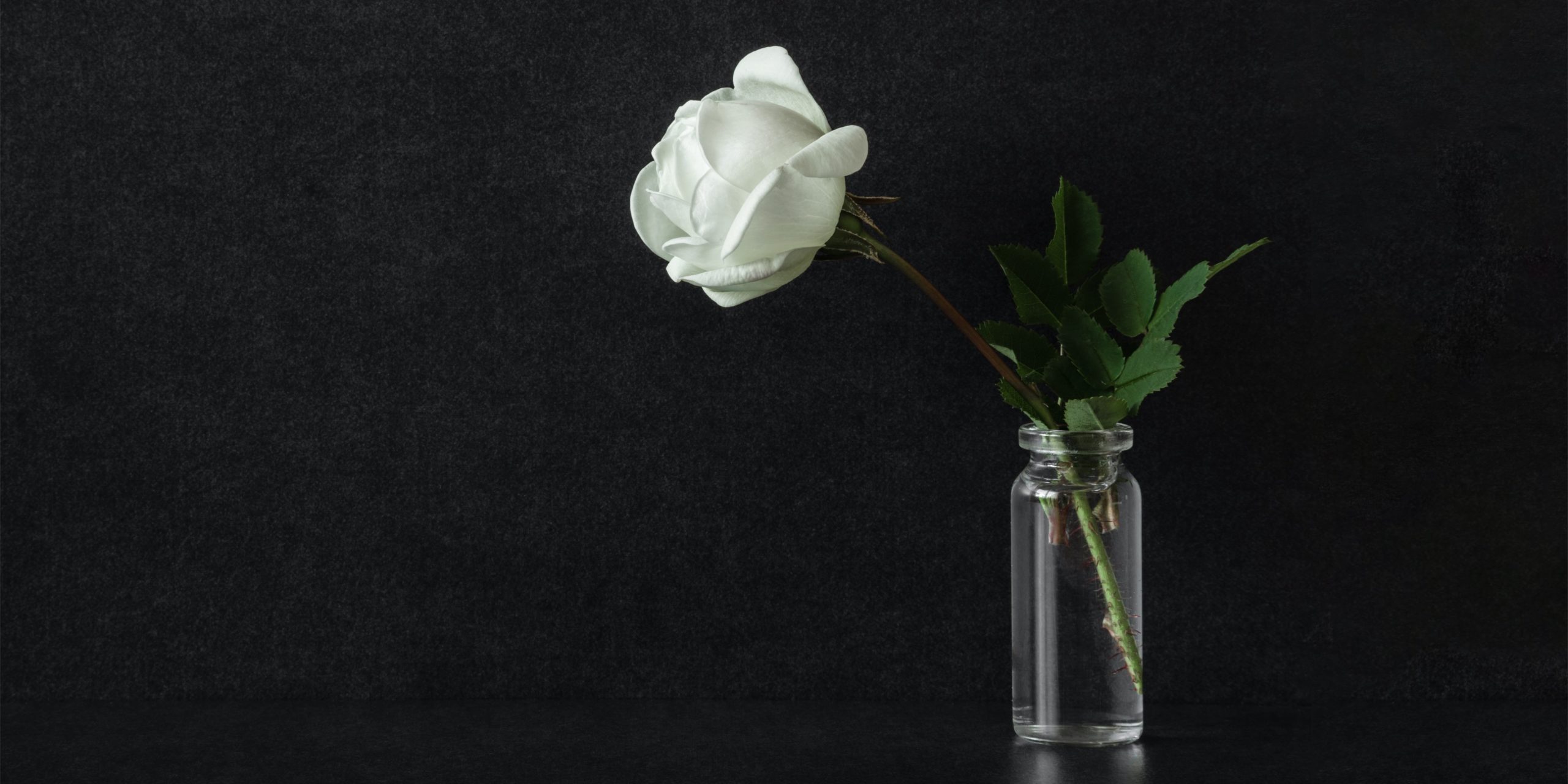11pm and I am worried my patient will not make it till tomorrow morning, says Dr Glenn Wakam. Twelve hours after intubation, the COVID-19 patient’s condition deteriorates dramatically, and Wakam knows that an even more difficult intervention follows: to explain to the patient’s wife, who begs to be allowed to say goodbye, that the hospital does not allow her this sad privilege.
In the last two weeks alone, Wakam and his colleagues, resident physicians like him, have witnessed more deaths in Detroit hospitals than they have in all their working years. The fact that the relatives of dying patients are begging for one last meeting with their dear ones is one of the very difficult things to manage. Overnight, from their usual promise of “we will do everything we can to keep him alive until you get here”, the doctors have been forced to turn to informing the family that access is forbidden due to the new safety policies adopted by the hospital.
Nevertheless, Wakam says that with creativity and compassion it is possible to connect patients with their family members, listing options like Skype, WhatsApp or FaceTime. At the same time, there are many impediments, including caregivers’ heavy workloads, which make a large-scale implementation of these options difficult, the doctor admits.
One final gift
Although hospitals around the world have not been allowing good-bye visits from relatives of dying COVID-19 patients, Tel Aviv’s Sourasky Medical Center has recently changed its policy. Because the hospital still has enough masks and gowns, it has not had to sacrifice this gesture of compassion towards those who are struggling with the loss of loved ones, said Ronni Gamzu, the executive director of the medical centre.
In fact, Gamzu insists, the standard position adopted by hospitals is a result of narrow thinking, contaminated by fear. He concedes that in some cases, particularly when hospitals are overwhelmed, banning the visits of relatives can be a temporary solution. But, where possible, visits should be allowed.
Allowing one last meeting with loved ones costs hospitals less than one percent of the protective equipment they use, so, “Wouldn’t you like to invest one percent in humanity?”, the executive rhetorically asks.
At his hospital, each patient is allowed to receive a visit from no more than two family members, and the visit must not exceed half an hour.
“This is the moral thing [to do]. No one should die alone. I do not understand the logic of this“, said Avi Shushan, spokesman of the hospital, who initiated the visiting policy which was later adopted by other hospitals in the country.
These last meetings release a lot of emotion and pain (as evidenced by the video here), but they are a real gift to the family, says Elisheva Stern, 42, who was allowed to see her father for a few minutes. She is reconciled with the fact that she was able to say a few words of parting, that she had one last image with him in her mind: ”It just looked like my father sleeping. It kind of gives it a better closure, rather than, you know, the person just disappears from your life.”
An epidemic of solitary pain
We cannot delude ourselves that the solution adopted by some hospitals in Israel will become universal, at least not very soon. People will continue to die alone, and their loved ones to suffer apart from them, in a way that will necessitate a rewriting of the way we mourn someone’s demise and reconcile with loss.
“What I need is for the world to be a little softer and gentler when I’m around,” wrote journalist Ann Brenoff a few months after losing her husband. But if social support is a key element of healing after the death of loved ones, how can those who lose loved ones keep going, in the special circumstances imposed by the current epidemic?
There really is no appropriate time to say goodbye to a loved one, but the time in which we are living now is especially challenging. At any time, when loss pierces the heart, the process of emotional healing requires time and support. But the pandemic makes it difficult to go through all the stages of mourning and makes us feel completely powerless, explains Dr. Alan Wolfelt, director of the Center for Loss and Life Transition. The crisis we are going through is nothing like what we have experienced before, Wolfelt points out, stressing that the travel ban and physical distancing affects families who lose their members even for reasons other than COVID-19 infection or who are affected by other tragedies.
”Holding the hands of the dying and spending time with the body afterward are ways that we as human beings acknowledge the reality of a death, and begin to embrace the pain of the loss,” Wolfelt says. He explains that funerals are a process by which we can transform our relationship with the departed, replacing the presence with the memory, but also detaching ourselves from the past, finding a meaning for the future.
The Irish Times collected stories of those who recently buried their loved ones, and the leitmotif from this collection was the feeling of emptiness in which the whole process of mourning unfolded.
Geraldine said goodbye on the phone to her 88-year-old mother, diagnosed with COVID-19. Most likely her mother could no longer hear her words. The new coronavirus is “a plague,” writes Geraldine—one that steals even the consolation of gestures marking the parting: “Stroking the hair of your loved one, holding their hand when they are dying. Supporting my brother at the burial when my mam was lowered into the ground beside my dad.”
Crossroads between cultural constraints and the unique complexity of losses
Grieving in the time of COVID-19 is a real challenge, writes journalist Elizabeth Yuko. She lost her mother seven months ago, and for the next six months she worked and travelled a lot to bury the pain. This last month, when the pandemic forced her to stay at home, she found herself sinking into suffering again, being too far from people and too close to memories. Our culture is not tailored to the deep or lasting support of the grieving, Yuko points out. We expect people to mourn a little and then continue with their lives as if nothing has happened. Grieving takes painstaking effort even when done in the most favourable of circumstances, but in the current circumstances it leaves us hanging in a state of pain, concludes the journalist.
Our culture “leaves no room for pain,” says psychotherapist Megan Devin, explaining that Americans are navigating troubled waters these days, experiencing a new type of pain that changes the landscape of ordinary life. What we are experiencing could be called “an epidemic of unspoken pain”, and it could turn into a new wave of epidemics of loneliness, depression, social isolation and even suicide, Devin points out.
Many people feel overwhelmed by events, says Phyllis Kosminsky, a social worker who specialises in loss and trauma, explaining that we feel dislocated from our natural purpose by the loss of safety and predictability.
In fact, although we do not even know what name to give to this loss that we are feeling, it certainly encompasses the feeling that everything that has ever made us feel safe has slipped out of our hands, even “the illusion that we can keep our lives under control”, psychologist Sonya Lott says.
We are now living in “collective pain” (as R. Benyamin Cirlin, director of the Center for Loss and Renewal, calls it), after losing our economic stability, the right to move without restrictions and the freedom to participate in the sad or joyful events of our families and of our communities.
And when the threads of mourning are woven on this canvas of loss, people need extra support. We need to find creative solutions to manage our natural grief grafted onto the pain caused by the disappearance of the world as we knew it. In other words, says David Kessler, founder of the Grief.com platform, the natural isolation resulting from the grieving process now overlaps with the physical isolation imposed by the epidemic.
Grief management during the pandemic
The stages of grief are not linear and do not necessarily flow in a specific order, says Kessler, who worked with psychiatrist Elisabeth Kübler-Ross to update the Kübler-Ross model of coping with loss (denial, anger, negotiation, depression, and acceptance). People tend to simplify these steps and consider them standard for going through pain, but in reality “there is nothing simple or orderly when it comes to pain” says Kessler. According to the pain expert, acceptance does not mean that we have reached the end of suffering (he proposes a sixth stage, which I will return to later) and there is no single moment of acceptance, but a number of such sequences in which we make peace with the losses we have suffered.
The kind of social contact that brings the most emotional comfort is the one which allows us to see each other, even from a distance. But we can offer minimal support to a grieving person simply by sending them a letter, an email or a text message, explains Rebecca Cowan, one of the teachers involved in a counselling program at Walden University. Sometimes, the grieving person may need a therapist to get through the pain, and many specialists currently offer free support to those affected by COVID-19, says Cowan. The teacher also believes that a powerful way to offer support is to compile a list of all the good resources available to grieving people and offer it to your grieving friend or loved one.
In such a loss-infused time, we need patience to process pain, says Michelle Drouin, a psychology professor at Purdue University Fort Wayne. Aware of the unprecedented crisis we are going through, we need to learn to deal with pain, instead of avoiding it (possibly through substance abuse) and be patient with ourselves if the mourning seems too long or atypical.
Funerals, vigils or commemorations can be postponed, but going through the stages of pain can’t, Drouin concludes.
It may be helpful to close a relationship that ended abruptly through death, by writing a letter in which to express your thoughts, or by writing an obituary.
Quarantine may prevent us from going to a funeral, but we can organise an online vigil to share tears and memories and support each other, suggests Shelby Forsythia, author of Permission to Grieve.
Sharing memories is very important in a time of mourning, because, after all, “the purpose of mourning is to teach you how to love a person in their absence,” Cirlin points out, emphasising the role of memories in providing meaning for a death that, most of the time, makes no sense to the survivors.
In fact, Kessler argues, finding meaning is the sixth stage of the mourning process and it is the most important condition allowing development even after a traumatic event.
We are upset not only because our loved ones are dying, but because they are doing so in “disturbing” ways, while we know that in the absence of COVID-19 they would still be alive, psychiatrist Katherine Shear points out.
There are many resources we can turn to—from prayer groups to online assistance and specialist support—to find meaning in what is happening to us or our loved ones, writes psychologist Doreen Marshall.
“The last sentence of the book does not rewrite the whole story“, the psychologist points out. These words, which she received as consolation when a loved one died, helped her to realise that, although she was unable to visit that person before their death, it is not the end that describes the story of their relationship, but the multitude of interactions and proofs of love during life, which an unexpected death could not undo.
Religious beliefs can be very important to get through mourning during a pandemic, which can be a challenge as unique as the new coronavirus, said Michelle Drouin.
To paraphrase Marshall’s words, we can say that the way a person died, no matter how strange and painful, is by no means the final chapter of their life. Someone’s death can be a painful exclamation mark or a piercing question mark, but it is never a final point. Because through His cruel death, the Author of life wrote for us the happiest of endings that were ever written.
Carmen Lăiu is a writer for ST Network and Semnele timpului.
The video was created by a network of Seventh-day Adventist communicators in Europe and beyond [GAiN Europe].



















